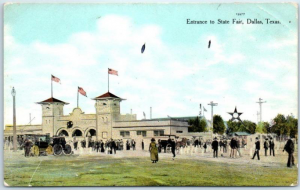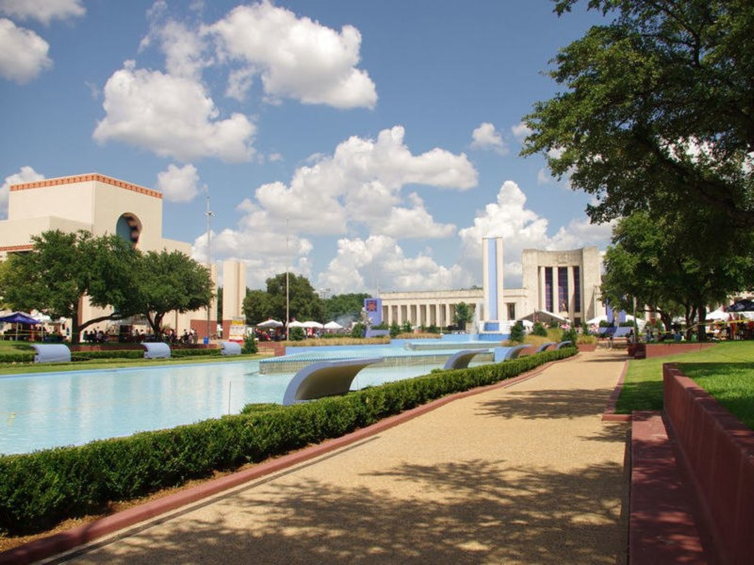Fair Park is home to the State Fair of Texas, an annual event drawing as many as two million visitors each year. Image from VisitDallas.
Fair Park
Established: 1886
Size and Location: 277-acre cultural and recreational complex east of downtown Dallas
Noted For: Fair Park is noted as the setting for the State Fair of Texas, as well as famous venues like the African-American Museum, Hall of State, Cotton Bowl, and others. The park is designated as a Dallas Landmark, a National Historic Landmark, and a Great Place in America.
If you’ve lived in Texas for more than a minute, you probably already know that the legendary State Fair of Texas, hosted each year at the equally famous Fair Park in Dallas, is an event rich in Texas culture and tradition. What you probably don’t know, however, is that the fair and the Fair Park grounds both played intriguing roles in the early 20th century battle to win votes for Texas women.
Fair Park’s ties to the suffrage movement date as far back as 1893, the year that the Texas Equal Rights Association (an affiliate of the National American Woman Suffrage Association) hosted a “woman’s congress” at the State Fair that drew more than 300 participants.
From 1913 to 1917, the fair hosted an annual “Suffrage Day” that provided an opportunity for Dallas-area suffragists to join forces to promote the Texas suffrage campaign to visitors from all over the Dallas-Fort Worth region and across the state.
The 1915 version of this event is noted as being particularly successful, since it drew additional advocates from other Texas cities and also featured a suffrage automobile parade. That same year, advocates were also successful in persuading thousands of visitors who attended the fair’s “Traveling Salesman Day” to wear brightly-colored “Votes for Women” campaign buttons as they enjoyed the fair’s activities.

On the left: Vintage postcard featuring the State Fair in Fair Park. From hippostacard.com
It may seem strange to think of the home of Big Tex, crazy food, family fun and carnival rides as the setting for an important social justice effort.
However, the suffrage events of the early 20th century would not be the last time that Fair Park was the setting for history in the making. In 1955, Dallas civil rights advocate Juanita Craft organized a protest at the State Fair that drew critical attention to the event’s practice of segregation and limited access for African-American fairgoers. (Bonus fact: A few years earlier, Juanita made history by becoming the first African-American woman to vote in Dallas County.)
Additional Reading:
“Women and the Creation of Urban Life: Dallas, Texas, 1843-1920” by Elizabeth York Enstam

